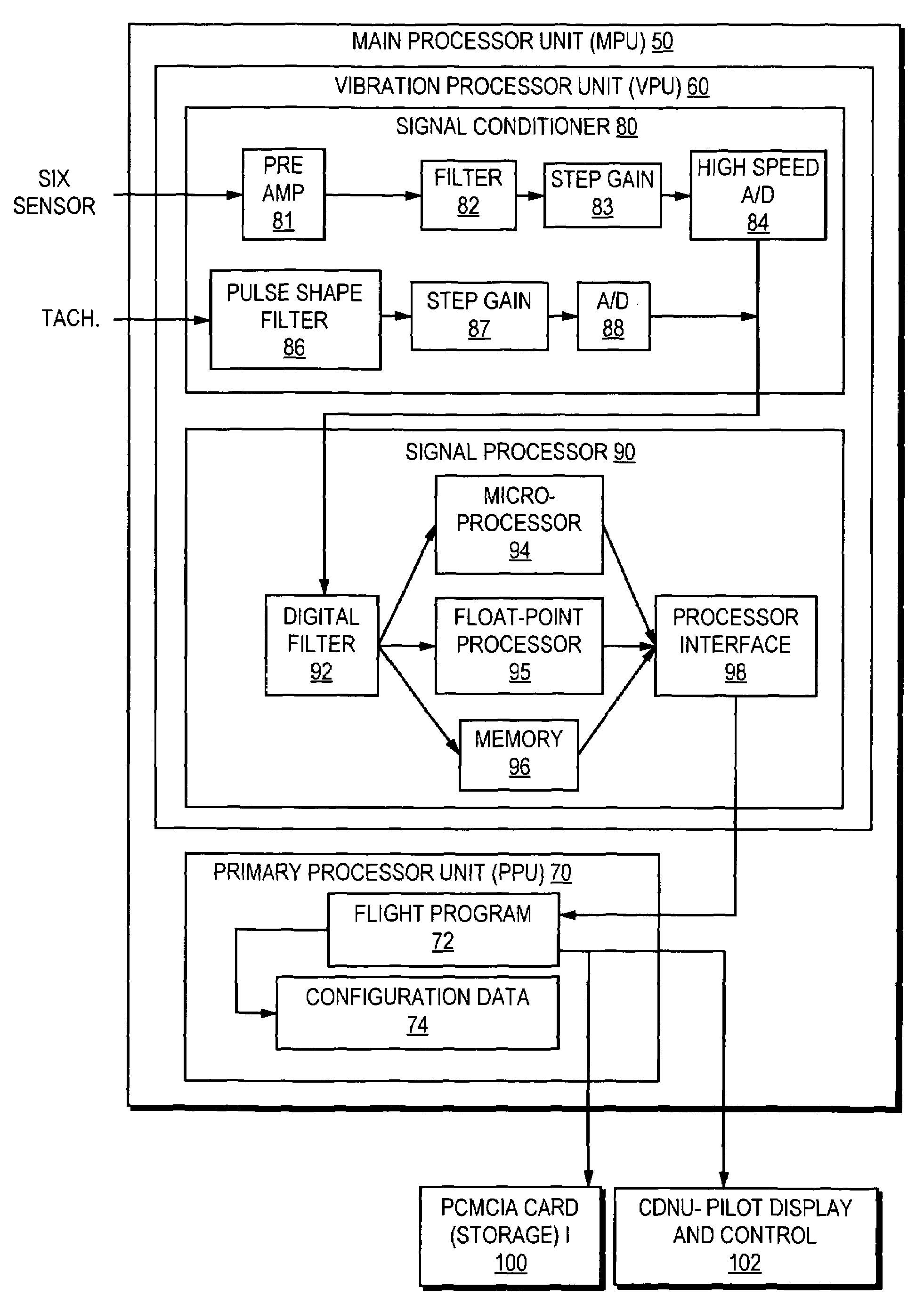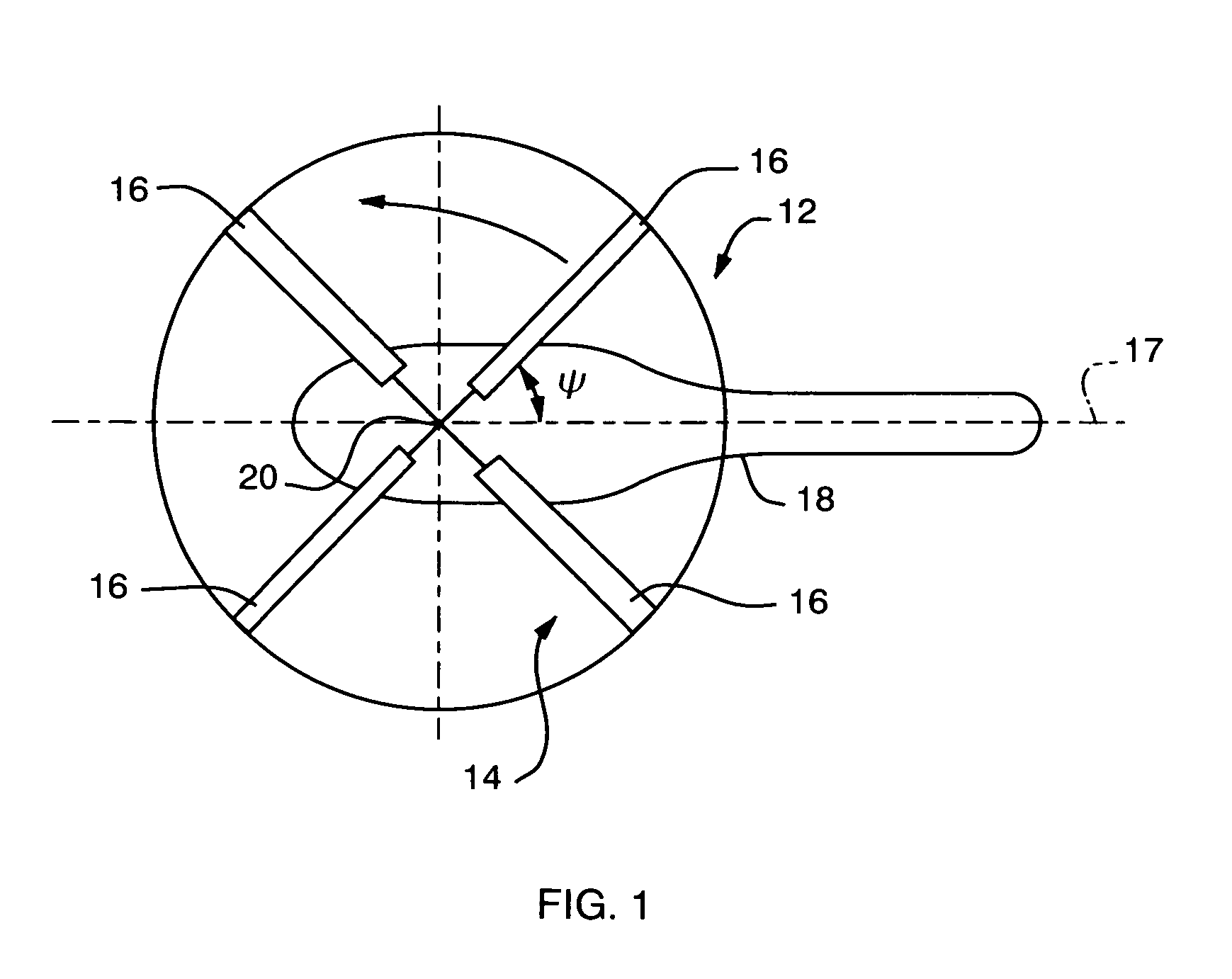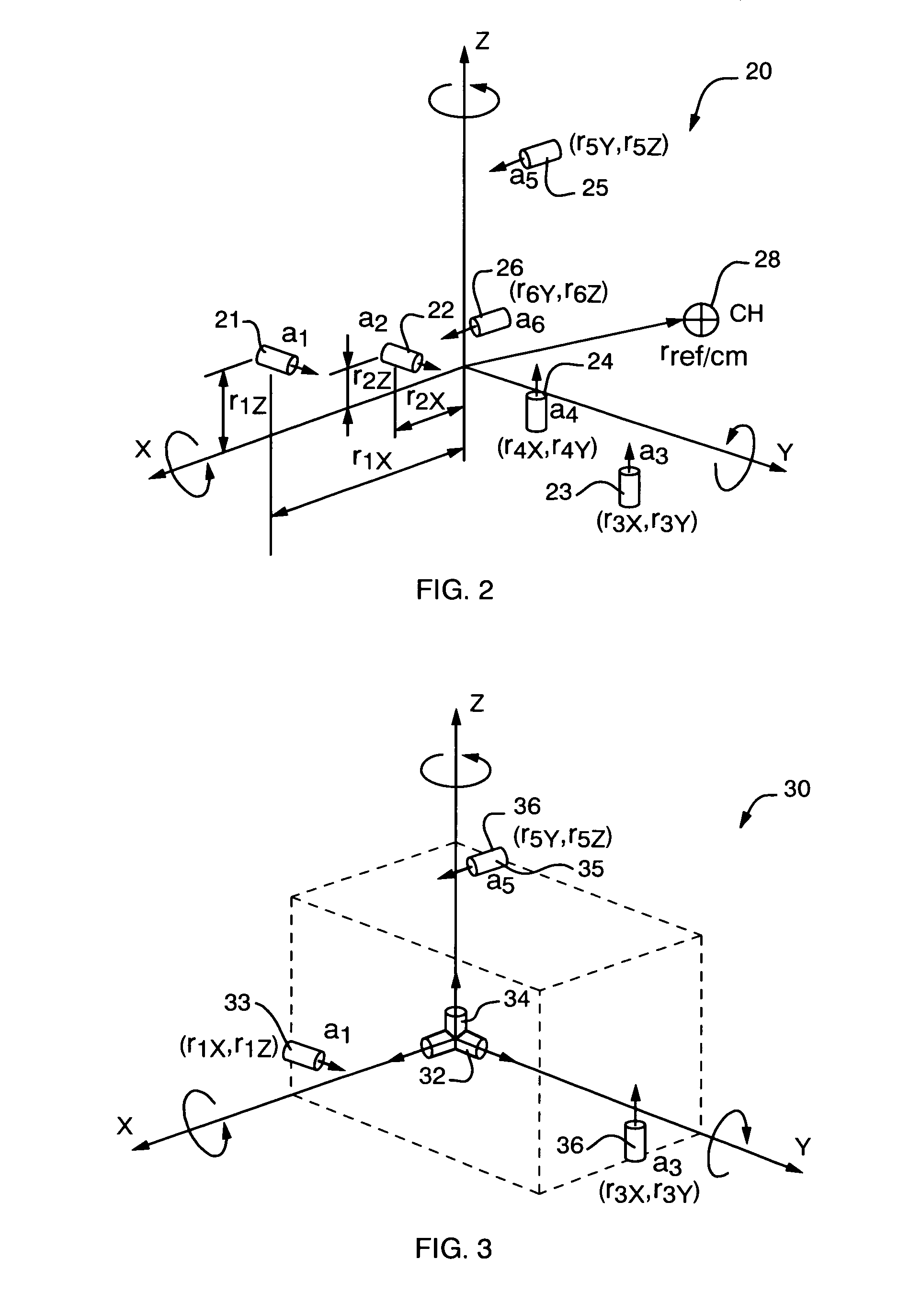Reducing vibration using QR decomposition and unconstrained optimization for a multi-rotor aircraft
a multi-rotor aircraft and optimization technology, applied in the field of vibration analysis, can solve the problems of crew fatigue, structural damage, vibration in the structure supporting the rotor, etc., and achieve the effect of reducing vibration, reducing vibration, and reducing vibration caused by rotating blades
- Summary
- Abstract
- Description
- Claims
- Application Information
AI Technical Summary
Benefits of technology
Problems solved by technology
Method used
Image
Examples
Embodiment Construction
)
[0021]Referring to FIG. 1, a helicopter 12 is shown having a rotor 14 with a plurality of blades 16. One of the blades 16 may be selected as a reference blade and each of the other blades 16 may be assigned a blade number starting with zero for the reference blade and increasing by one in the direction of rotation. For example, for the four-blade rotor 14 shown in FIG. 1, the blades may be numbered zero through three. Note that the system described herein may work with a different number of blades such as seven. Generally, for a system with B blades, the blades may each have an assigned blade number from zero through B−1. In addition, in some embodiments, the blades 16 may be identified by assigning a unique color to each blade.
[0022]Rotation of the blades 16 generates vibrations in the helicopter 12. As described in more detail below, the vibrations may be measured by sensors and then used as inputs to a process that determines adjustments that can be made to the blades 16 to redu...
PUM
 Login to View More
Login to View More Abstract
Description
Claims
Application Information
 Login to View More
Login to View More - R&D
- Intellectual Property
- Life Sciences
- Materials
- Tech Scout
- Unparalleled Data Quality
- Higher Quality Content
- 60% Fewer Hallucinations
Browse by: Latest US Patents, China's latest patents, Technical Efficacy Thesaurus, Application Domain, Technology Topic, Popular Technical Reports.
© 2025 PatSnap. All rights reserved.Legal|Privacy policy|Modern Slavery Act Transparency Statement|Sitemap|About US| Contact US: help@patsnap.com



